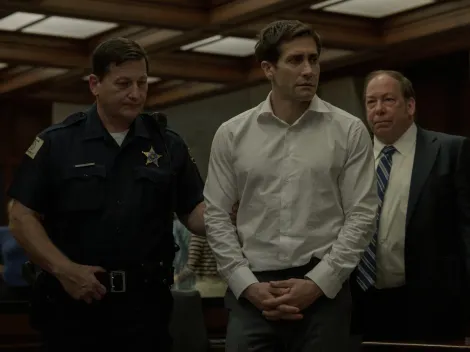“Presumed Innocent” is undoubtedly one of the most well-crafted legal thrillers in literature, cinema, and now television, thanks to Jake Gyllenhaal‘s new adaptation of Scott Turow‘s story, currently trending as the #1 show on Apple TV+.
The plot centers on Rozat “Rusty” Sabich, the right-hand man of district attorney Raymond Horgan, who becomes the prime suspect in the murder of his colleague Carolyn Polhemus, with whom he had an extramarital affair. As all suspicions point to him, Rusty strives to save his marriage and protect his family from suffering.
The narrative is so cleverly constructed and chilling that it feels almost too intricate to be purely fictional, suggesting there might be a real story behind this fictional tragedy. Here, all about the topic.
Is ‘Presumed Innocent’ based on real events?
In an interview with NPR, Scott Turow revealed that he drew inspiration for his stories by consulting with experts in the field. For example, when writing “Innocent,” his 2010 novel that continues Rusty Sabich’s story, he spoke with many professionals in order to write his book. He explained:
“I talked to a toxicologist named Jerry Leikin and a pathologist, Michael Kaufman, and I would just tell them what I needed. I needed, you know, a death that could be mistaken for natural causes and I described what ailments the victim had and they would give me suggestions.”
Turow even admitted that some details in the sequel were inspired by a real-life case, though he preferred to keep specific details under wraps. This suggests that “Presumed Innocent” might also have drawn from real cases, given its intricate and realistic narrative.
One closely resembling case is that of Thomas Capano, a prominent attorney and former state prosecutor, who was convicted of murdering his mistress, Anne Marie Fahey. Capano was found guilty and sentenced to life in prison.
Another similar one is that of Fred Tokars, a former prosecutor and defense attorney implicated in the murder of his wife, Sara Tokars. Fred was found to have hired a hitman to kill Sara, leading to his conviction and life sentence.
These real-life cases bear significant resemblance to the themes and events depicted in Turow’s tale, adding a layer of authenticity and intrigue to his work, even though the author has never explicitly referenced any specific situation as the inspiration for his stories.





